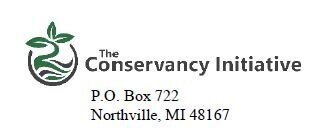On October 10, 2023, EGLE issued a Violation Notice to Green for Life (GFL) for the excess emission and noxious odors originating from the Arbor Hills Landfill.
Over 200 odor complaints were submitted by property owners living downwind of the landfill during the first 22 days of October.
Approximately 90% of the odor complaints occurred on just 8 days (Oct 1, 4, 6, 9, 10, 11, 20, and 22) when the weather station at the Arbor Hills Landfill documented the wind was blowing towards (out of the West or Southwest) Northville Township neighborhoods. (See Figure 1).
On the remaining 14 days, far fewer odor complaints were received (~1 per day). Less than 20% of the hourly wind direction readings were from the West or Southwest. (See Figure 2).
Fig 1 - Wind Direction during 8 days with 193 odor complaints
Fig 2 - Wind direction on 14 days with 20 odor complaints
Since Cell 6 began operation in July, the wind direction, not any action taken by GFL, is the most important variable to predict noxious odors. If the wind blows towards Northville Township, expect excess emissions and noxious odors in the Northville Township neighborhoods.
The Conservancy Initiative is spotlighting the GFL Arbor Hills Landfill’s continuing poor Environmental Performance and lack of concern for the community. The recent enforcement actions against the Arbor Hills Landfill have not improved the landfill’s impact on the community. The Arbor Hills Landfill has demonstrated that regardless of the owner (BFI, Veolia, Republic, Advanced Disposal Services, or GFL) this site is not appropriate for a landfill expansion.
Response to the Recent Violation
GFL submitted its response to the October 10 Violation Notice on October 13, 2023. GFL’s response does not dispute the Arbor Hills landfill is the source of the odors. GFL claims they first became aware of excess emissions and odors from Cell 6 on September 6th and immediately began investigating the source of the odors and exploring corrective actions. Over 200 odor complaints were received during the two months prior to these actions (July 7 – September 7). This does not sound like immediate action.
The earliest documented remedial actions included increasing the cover (add more dirt or synthetic barriers) in areas where landfill gas was escaping. GFL determined these actions were ineffective, as the landfill gas was simply finding a new path to escape. On September 20th, GFL concluded the escaping landfill gas would need to be captured and controlled to mitigate the noxious odors. Apparently, significant time and investments would be required to complete the installation of the Gas Capture and Control System (GCCS) for Cells.
On September 20, 2023, Arbor Hills concluded that the corrective measures required to completely mitigate the ongoing perimeter monitor alarming would require a large-scale project to complete. Arbor Hills submitted a 120-day extension request to EGLE, until January 18, 2024, to complete a design, procure a third-party contractor, and install vacuum lines to the caisson wells currently installed in Cell 6A. [i.e. - operated the Gas Capture and Control System]
GFL failed to mention the site inspection and limited Surface Emission Monitoring (SEM) conducted by EGLE at the Arbor Hills Landfill on September 21st. During this inspection, EGLE conducted a limited Surface Emission Monitoring (SEM) survey. A SEM survey involves scanning the surface of the landfill with special equipment to find and measure methane leaking through the landfill cover. All significant leaks must be promptly corrected and verified. Arbor Hills is required to conduct full SEM surveys of the entire landfill on a quarterly basis.
During a brief SEM survey (3.5 hours), a team from EGLE identified numerous potential issues. These findings are concerning. Has GFL really been conducting a meaningful odor investigation? Why were these issues not identified by GFL?
31 areas of concern (areas with methane emissions exceeding 500 ppm near the landfill surface). One area had methane emissions high enough to set off an alarm on the Lower Explosive Limit (LEL) monitor worn by an inspector from EGLE. All these areas have a timetable requiring corrective actions.
Numerous Erosion Rills (areas where precipitation runoff forms channels that penetrate the landfill cover) were noted. One rill was estimated to be 10 feet deep. Erosion rills represent areas of potential emissions, leachate outbreaks, and a pathway for precipitation to enter the landfill.
Several leachate breakouts (areas where leachate percolates through the landfill cover and puddles on the surface). The leachate breakouts present an odor concern but they also represent areas where precipitation runoff can become contaminated by PFAS chemicals in the leachate.
EGLE recommended GFL “apply vacuum to the GCCS at Cell 6 as soon as possible.”
Both EGLE and GFL agree activating the Cell 6 Gas Capture and Control System (GCCS) is the corrective action best suited to mitigate the excess emissions and noxious odors, but it appears the GCCS will not be operational for several months. EGLE approved a plan submitted by GFL to have the GCCS operational by mid-January 2024. It is very concerning that GFL argues the legal due date for making the GCCS operational is actually January 2025 in their Violation Response.
The Conservancy Initiative urges GFL to find a way to improve the timetable to make the GCCS operational. We also recommend that EGLE strictly enforce compliance with the recent Consent Decree as well as environmental regulations. EGLE should utilize the stipulated penalties included in the Consent Decree to the full extent possible.


